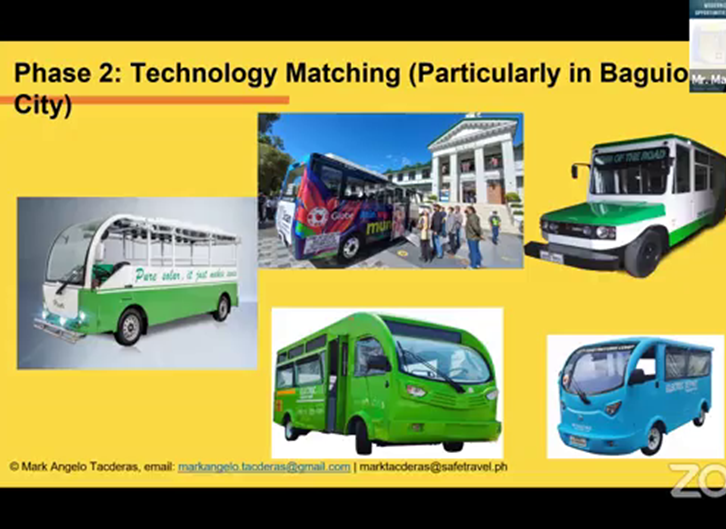Increase Your Company with Transit Advertising Philippines
Increase Your Company with Transit Advertising Philippines
Blog Article
How Transit Marketing Can Change Public Transport Spaces Into Dynamic Advertising And Marketing Platforms
Transit advertising holds significant possibility to redefine public transport spaces into vibrant advertising platforms that engage and educate. By using ingenious styles such as digital displays and interactive kiosks, brand names can not just reach a diverse audience however additionally improve the total traveler experience. This technique produces an one-of-a-kind chance for brand names to link with consumers in a setting that is typically ignored. As we explore the complex benefits and evolving techniques of transit advertising, it increases the inquiry of just how this improvement could redefine our interactions with both brand names and the metropolitan setting.
Advantages of Transportation Marketing

Furthermore, transit advertising is very cost-efficient compared to conventional media. It allows advertisers to achieve high impressions at lower costs, maximizing roi. The restricted audience of commuters supplies a possibility for brands to share their messages to individuals that are often receptive throughout their travel times.
Moreover, the vibrant nature of transit advertising allows projects to be upgraded regularly, guaranteeing that messaging continues to be relevant and prompt. This versatility can be essential in replying to market patterns or promotional occasions, maintaining the brand name top-of-mind for customers. Lastly, the prevalent presence of transportation advertising adds to brand name recall; duplicated exposure within acquainted traveling contexts enhances brand recognition and cultivates customer commitment, ultimately driving sales and boosting brand name reputation.
Kinds of Transit Advertising
Mass transit systems offer numerous layouts for advertising and marketing, each accommodating different advertising methods and target market involvement approaches. One famous kind is outside bus and train covers, which cover the whole lorry and produce a mobile billboard effect, enabling high exposure in city settings. These covers can record attention as they go across busy streets, reaching a varied target market.
One more preferred style is indoor advertising, that includes posters, electronic displays, and ads on transit seats. These placements involve guests throughout their trip, strengthening brand messaging in a restricted area. Digital displays, particularly, provide the advantage of vibrant material, allowing marketers to update messages in real-time.
Terminal marketing is also significant, including posters, banners, and interactive stands within transit stations. These advertisements leverage foot traffic and can target specific demographics based upon area.
Finally, promotional collaborations with transportation authorities can result in special projects, such as themed transit experiences or events, enhancing the overall engagement with travelers. Each kind of transportation marketing provides distinctive advantages, enabling brand names to customize their approach to successfully reach their target market within the general public transport ecological community.
Involving Travelers Effectively
Commuters are significantly inundated with advertising and marketing messages during their day-to-day travels, making it essential for brands to involve them in innovative methods. To record focus in this congested space, advertisers should prioritize creativity and significance. Making use of captivating visuals and succinct messaging can substantially enhance the chance of interaction.
Interactive aspects, such as QR codes or enhanced fact attributes, can additionally change Click Here static ads right into immersive experiences, cultivating a much deeper link with the audience. Brands should concentrate on dealing with travelers' interests and demands, tailoring messages to resonate with their lifestyle, whether via promotions for neighborhood businesses or services made to boost their commuting experience.
Furthermore, timing plays a critical duty; strategically putting ads throughout height commuting hours can take full advantage of presence and effect. Involving travelers successfully also includes leveraging social networks combination, enabling guests to share their experiences or promos directly from transit systems, therefore intensifying brand name reach.
Basically, reliable involvement rests on comprehending the traveler trip and developing compelling, interactive, and relevant advertising experiences that not just record attention however additionally drive action and loyalty. By doing so, brands can transform public transport right into a vibrant advertising and marketing system that resonates with its audience.

Measuring Advertising And Marketing Effect
Just how can brand names precisely evaluate the performance of their ad campaign en route settings? Gauging the effect of transit advertising needs a complex technique that integrates quantitative and qualitative metrics. One prevalent technique is tracking interaction via mobile analytics, where brands can examine foot website traffic patterns and application communications before, throughout, and after projects.
Surveys can supply valuable insights right into brand recall and consumer view, allowing brand names to evaluate just how well their messages resonate with commuters. Furthermore, checking social networks interaction pertaining to particular projects can expose shifts in public perception and brand name discussion.

Moreover, teaming up with transportation companies can boost measurement precision, as they frequently have thorough group data on ridership patterns. By incorporating these methods, brands can create an extensive understanding of their advertising and marketing performance, making certain that their campaigns not only get to but likewise influence their target audiences efficiently.
Future Trends en route Advertising And Marketing
A substantial shift is anticipated in transportation advertising as technological developments and changing customer habits reshape the landscape. Transit Advertising Philippines. The combination of interactive media and digital screens is expected to enhance interaction, allowing brand names to supply dynamic web content that reverberates with diverse target markets. As mass transit systems embrace smart technology, advertisers will certainly leverage real-time data analytics to customize messages based upon traveler demographics and behaviors
Moreover, enhanced reality (AR) is positioned to reinvent the method commuters communicate with promotions. By giving immersive experiences, AR can transform an ordinary trip right into an interesting story that records focus and cultivates brand name loyalty. This development will likely encourage advertisers to produce more experiential projects that drive customer communication.
Sustainability is one more vital trend affecting transportation advertising and marketing. As ecological consciousness expands, brands will increasingly look for to straighten with green techniques, utilizing sustainable products and promoting green efforts within their campaigns.
Conclusion
In final thought, transportation advertising and marketing provides considerable advantages by boosting brand exposure and engaging a restricted audience. As fads develop, the possibility for cutting-edge interactions between brands and commuters is positioned to expand, making sure that transportation advertising and marketing continues to be a crucial part of modern advertising and marketing approaches.
Transit marketing holds significant official source capacity to redefine public transportation areas into vivid advertising systems that inform and engage. The prevalent visibility of transportation advertising and marketing adds to brand recall; duplicated direct exposure within acquainted traveling contexts reinforces brand name recognition and promotes consumer commitment, inevitably driving sales and enhancing brand name reputation.
Exactly how can brand names properly evaluate the efficiency of their marketing projects in transit environments?In conclusion, transportation advertising provides significant benefits by boosting brand visibility and engaging a restricted target market. Transit Advertising Philippines. As fads evolve, the potential for cutting-edge communications in between brand names and commuters is positioned to expand, making certain that transit advertising stays a crucial part of contemporary advertising and marketing methods
Report this page